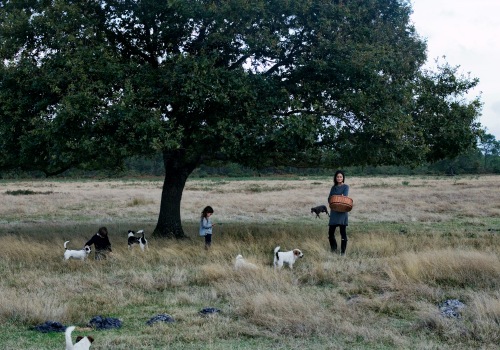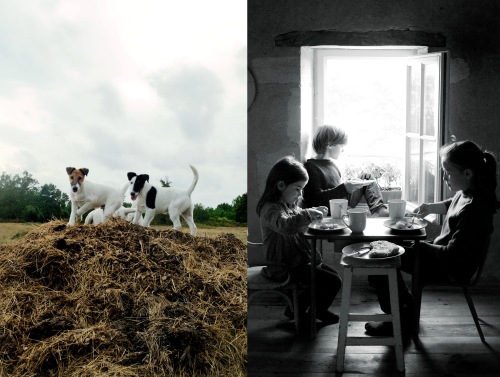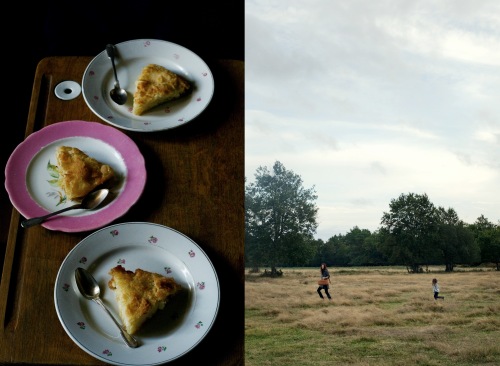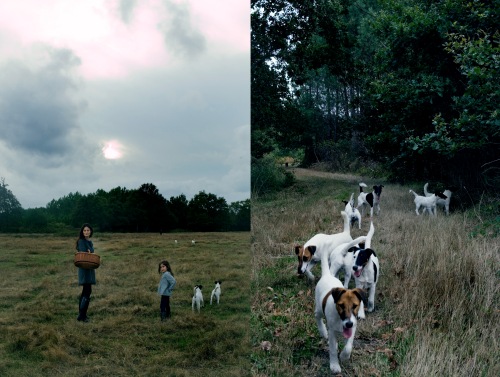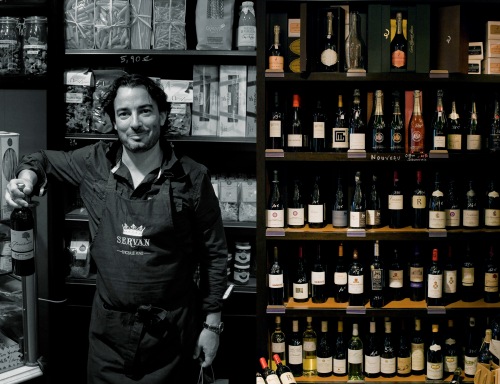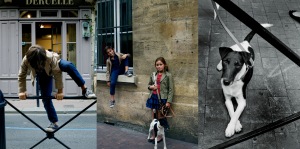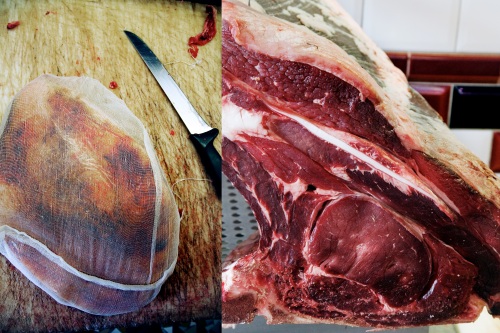The wacky and wonderful world of cèpes
After all the excitement build-up since the kids started school, days of searching in vain, we finally found beautiful cèpes. I have been sharing a few moments from my mushroom adventures through Instagram, discovering amazing parts of the forest I never knew. Every morning, I feel like an explorer, entering the woods with my stick, scrambling the leaves, and always looking down. I have lost my trail several times, playing games of twister with the fern, spiky branches and leaves everywhere. Total freedom. If I was in the girls scouts, I think I’d deserve a few brownie points for bravery and eagerness.
It’s rare to meet fellow mushroom pickers where we are, but I have met a few retired farmers holding large cèpes-filled baskets. It is considered very rude and inappropriate to ask where they unearthed their cèpes. Everybody has their secret places and they are not to be shared. Cèpes are most likely to be found by oak trees, but they can really be found everywhere. I heard that grandfathers reveal their lucky cèpes locations on their deathbeds. It’s in the family’s vault. There are also women curiously referred to as mushroom witches. They know where to go and can feel the cèpes from afar. These women go home with thirty kilograms of brown buttons every day. Whatever it is, there is an element of magic in the forest. I believe it is enchanted, filled with secrets and powers. The overwhelming energy makes me feel like a stronger person. The other day, I stumbled across the most fairytale-like view. Thousands of pink and white wild cyclamens glowing in the darkest part of the woods. I don’t think I could have asked for a better movie-set. Now I should really believe in fairies!
My husband took the kids mushroom hunting Sunday morning. It was pouring with rain, but they were all geared up and super excited. They came back home totally drenched, but their faces were brightened with the biggest smiles. They found twenty gorgeous cèpes very near our house. For lunch, I prepared buttered tagliatelle with garlic cèpes (fried in garlic and parsley) for the kids. For us grown-ups, we had cèpes omelette and cèpes carpaccio (sliced raw) with olive oil, salt and pepper. The kids were so proud, and I could see how gratified they felt when we thanked them for ‘providing’ food for the family.
Cleaning cèpes is simple. I use a knife, toothbrush, a damp cloth and a potato peeler. Cut off the tip of the mushroom’s stalk, scrape off as much earth as possible, peel a single layer of the stalk. It is not advised to wash them in water, because they are like sponges. You can wipe them with a damp cloth for a proper final cleaning.
Médoc is immersed in cèpes culture. Here, the cèpe mushroom is the king of the forest and one of the most sought-after delicacies. They are so hearty and flavorful, with the perfect combination of earthy and sweet taste. There are so many ways to enjoy cèpes, this is only the beginning of this fall’s love affair. Here are a few recipes I’ve been cooking this week.
Basic cèpes cooking tips:
● Always season cèpes with salt as soon as you start to cook them.
● Cook mushrooms on a high heat so the water evaporates faster
● If your frying pan is small, cook mushrooms in batches to avoid soggy mushrooms (if there is too much water released at once, the mushrooms won’t brown and cook in its own juice)
● If you want to store cèpes, it is best to wrap them in a cloth and stored in the refrigerator. Never put them in a plastic bag.
Potato and cèpes soup (serves 4)
400 g fresh cèpes, sliced (+ 1 tbsp butter, one garlic and one shallot, finely chopped, for frying)
8 medium potatoes
3 cloves of garlic
A pinch of nutmeg
3 tbsp butter
6 tbsp crème fraîche (or more depending on your taste)
2 tbsp chopped parsley
Salt and pepper for seasoning
Peel and chop potatoes into medium chunks. In a large pot, add potatoes, salt, nutmeg and garlic. Pour water just enough to cover the potatoes. Cover with a lid and cook for 15-20 minutes. Mash soup with a potato masher. Add butter, pepper and crème fraîche. Cover and set aside. Now you can prepare the cèpes, which will take a few minutes. Melt butter in a frying pan, add finely chopped shallots and garlic and fry for a few minutes. Turn heat to high, add sliced cèpes, sprinkle with salt, give the pan a good shake – this should take one minutes. Sprinkle with parsley. Serve soup in large bowls, add a generous amount of cèpes per person, sprinkle with more parsley.
Cèpes en persillade (serves 4)
Should you not have any cèpes, many other seasonal mushrooms works well with persillade.
1 kg fresh cèpes mushrooms, sliced in half if they are small enough (see photo), or sliced.
1 bunch parsley, finely chopped
3-4 cloves garlic
1 large shallot
3-4 tbsp butter or olive oil, for frying
Peel garlic and shallot and chop them as finely as possible. I use my food processor – quick and easy. Finely chop parsley. Set aside.
In a frying pan, melt butter, add finely chopped shallots and garlic and fry for a 1-2 minutes. Turn heat to high, add sliced cèpes, sprinkle with salt, give the pan a good shake – this should take 2-3 minutes. Sprinkle with chopped parsley and serve immediately.
Cèpes omelette – serves one very generous omelette
4 medium-sized cèpes (sliced)
3 eggs
1 tsp chopped garlic
1 tsp chopped shallots
A handful of chopped parsley
1 tbsp butter or olive oil, for frying
Whisk 3 eggs in a bowl till slighly frothy. Set aside. In a medium-sized frying pan, melt butter (or olive oil) add garlic and shallots and fry for 2 minutes. Add sliced cèpes, season with salt, stir well and cook for 30 seconds on a medium heat. Take a few cèpes and set aside to garnish the omelette. Add beaten eggs, salt and pepper, lower heat and cook for 3 minutes (depending on how you like your omelette cooked). Sprinkle with parsley. Take off from heat, gently roll omelette on each side. Return pan to heat for a few seconds. Place on a plate, plate saved cèpes on top of the omelette, sprinkle with parsley. Serve immediately.
Cèpes carpaccio
4 small cèpes per person
Olive oil, salt and black pepper for seasoning
Only choose smaller cèpes for this recipe. Slice cèpes into thin slices. Place on a plate, drizzle some olive oil, salt and pepper.
















